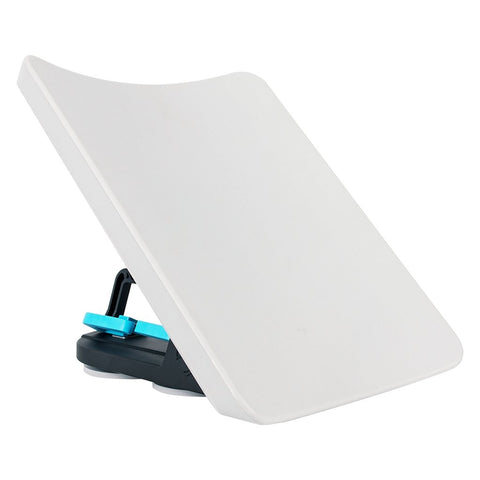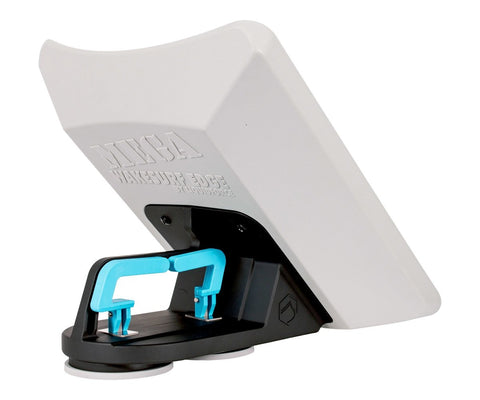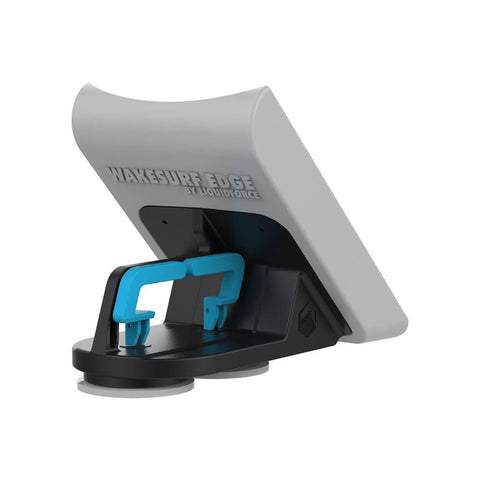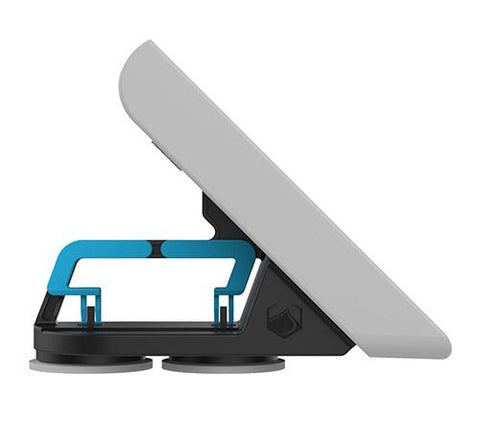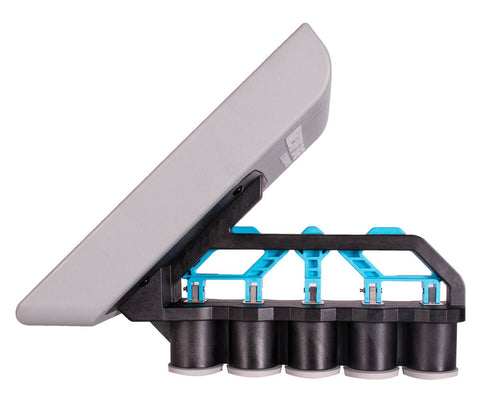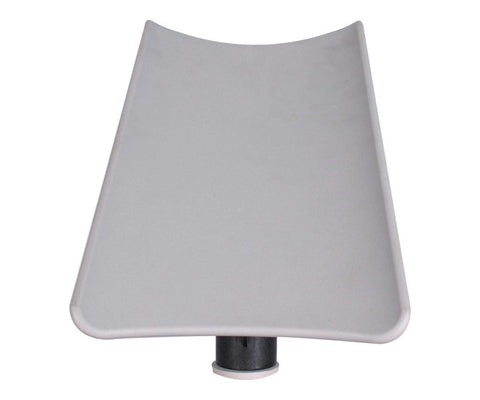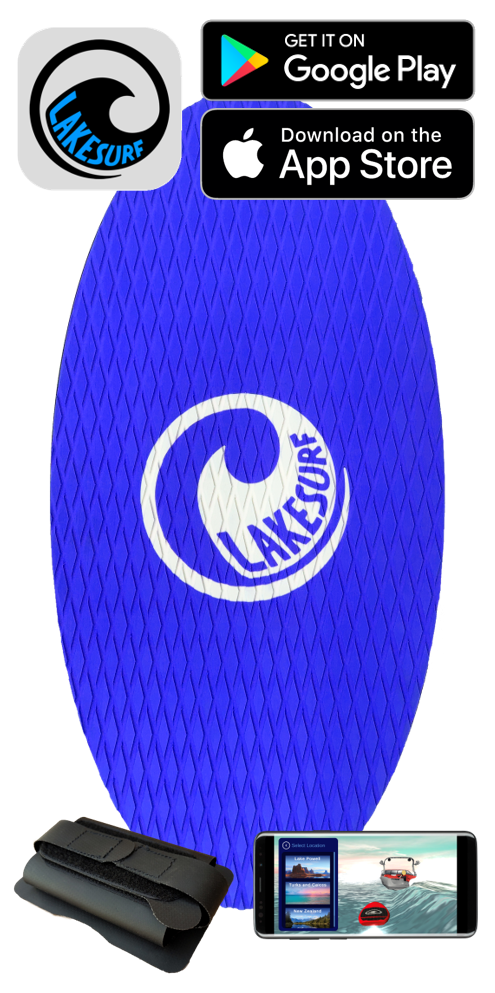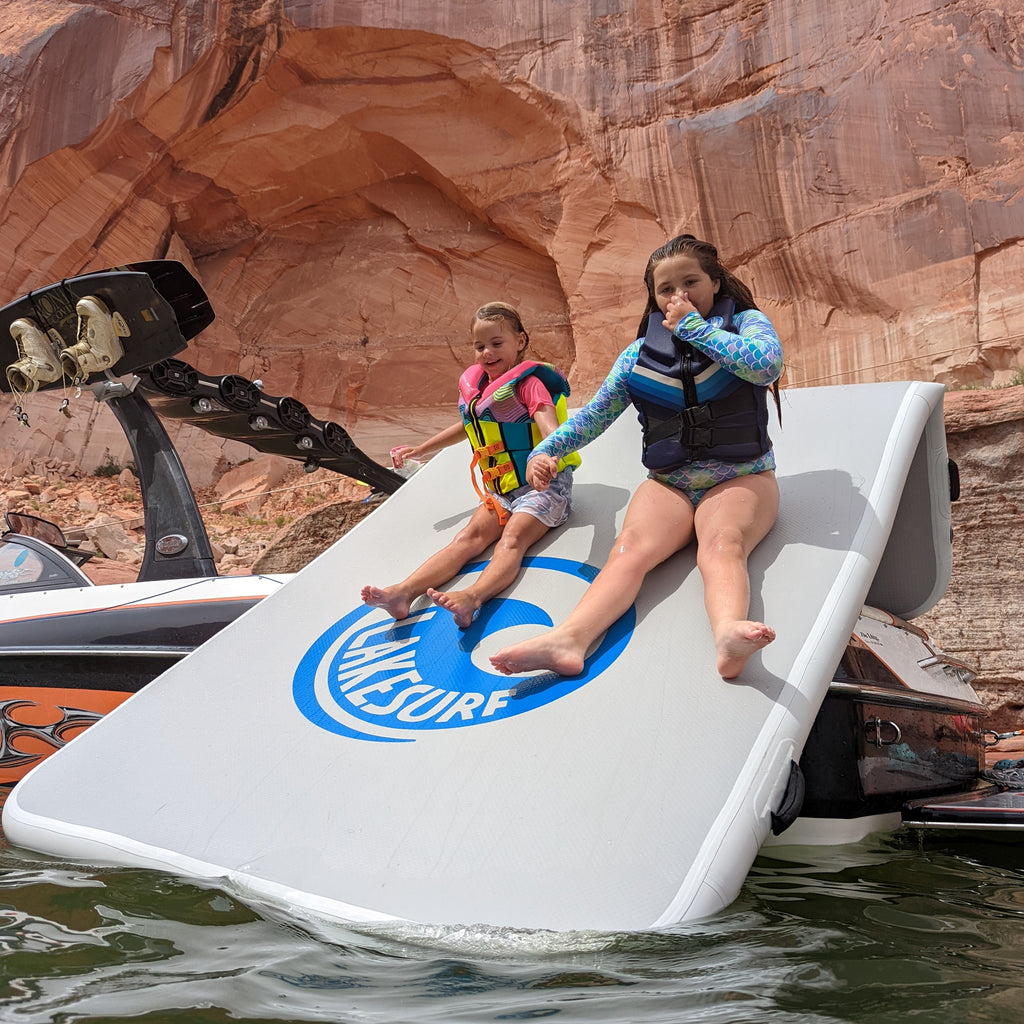Wakeshaping Science! Installment 1: How a Wake is Made
Board? Check. Boat? Check. Wakeshaper? Check. Ballast (water bags, Roc Sac, lead, and/or girthy friends?) Check.

You have stuff for wakesurfing, and your setup is even making a pretty decent wave. What can you do next to make your wave even better? To masterfully dial in your wave, first you need to understand HOW the wave is made. The better you understand this, the more you can improve your wave and the more you can adjust it for different rider experience levels, styles, and preferences.
There are a lot of variables that go into making a good wave. We’re going to look at the components of a good wakesurfing wave individually in this “Wakeshaping Science” series. This first installment, “How a Wake is Made,” will show you why wake happens in the first place. The next installments will be “All About Ballast” and “There’s Wakeshaping, and Then There’s Wakeboosting.”
DISPLACEMENT
Our old buddy Archimedes discovered that the weight of an object in a fluid is equal to the weight of the fluid displaced by that object. So as your boat is just sitting there, the part of your hull that is underneath the waterline is taking up volume that would otherwise be filled with water.

This volume taken up by the boat under the waterline is the displacement volume, and the weight of that volume of water is equal to the weight of your boat. When your boat moves through the water, it digs a tough through the water. The camera angle in this picture of pro wakesurfer Jordan Wolfe shows how much lower the trough can be than the lake's normal waterline - you can see her surfing in the trough, at the base of the wake:

Once there is a trough in the water that is lower than the lake's waterline, the surrounding water on either side is pulled "downhill" into the trough by gravity. The water from the port side and the water from the starboard side flows to the middle of the trough, and when the water flow from both sides hit each other, that volume of water has nowhere to go but up. When two flows of water hit each other from different directions, it has a positive reinforcement affect on the wave, and a wake is born.
Let's follow two groups of water particles for a few seconds. These particles are shown in red below.

Once the converged water reaches its max height, gravity causes it to flow back out to find its lowest point possible, falling over itself and eventually breaking into turbulent whitewash. This convergence cycle is also why your wake makes a V shape: This process of combining, jacking up to max height, then flattening out again happens to every linear inch of water the boat traveled through.
Here’s an extreme example of the positive reinforcement affect that happens when two flows of water combine from different directions:

That’s why your boat’s wake can be a lot taller than the waterline!
The water at a point 6 feet behind the boat converged and started this process earlier than the water that is at a point 5 feet behind the boat. So the water 6 feet behind the boat has had a little more time to flow away from the center than the water that is 5 feet behind the boat. The further behind the boat, the longer that water has had to flow away from the center of the boat’s line of travel in its quest to find the lowest resting spot possible. After the turbulent witewater has dissipated, smooth rolling waves slowly dissipating as they travel outward are all that remain.
The heavier your boat, the more water is displaced by it. If you add 1,000 lbs more weight to your boat, it will displace 1,000 lbs more water while it is just floating in the water. However, even though the extra 1,000 lbs will increase the volume of water in your wake, you won’t get exactly 1,000 more lbs of water in your wake once you get up to wakesurfing speed – it will be something less than that, for a couple of reasons: speed and hull shape.
SPEED
Our old buddy Sir Isaac Newton discovered that every action has an equal and opposite reaction. (Lots of old buddies helping describe the physics of wakemaking today!) Apply this to your boat: the faster it moves through the water, the more water per second its hull slams into. The more water your hull slams into for a given amount of time, the more water there is pushing back against your hull, forcing it upwards. The further upwards your boat rides, the less water volume it displaces. This is why, for the same boat at the same weight, its wake at 10 MPH is much larger than its wake at 30 MPH.
Now, I know what you’re thinking. If the wake gets bigger at lower speeds, why is it non-existent at like 2 MPH? This relationship of lower speed = bigger wake only holds true when the boat is going fast enough for the entire stern to be exposed to the air. Remember that the wake is created by water rushing to fill in the trough made by the boat, and then converging into a positively-reinforced wave. For that trough to happen, the boat must be going faster than the rate at which the water can flow in to fill that trough’s void. At low speeds, the water fills in the gap behind the boat faster than the boat is moving away from the water, so the stern of the boat is submerged. As soon as the boat is going fast enough to get away from the water that is trying to rush in to fill the void behind the boat, the entire stern of the boat is exposed to the air, as show below:

This is about when you have max wake height, because it is the speed that creates the least amount of upward forces on the hull while keeping the entire stern out of the water for biggest trough creation. And the bigger the trough, the bigger the wake will be when the displaced water from both sides rush back in to slam into each other.
This max wake height also means the wave isn’t very long. That is almost always the tradeoff when setting up your wake – tall but not-very-long, or long but not-as-tall. We’ll get more into that discussion in our next installment, All About Ballast.
This max wake height happens between 9-10 MPH for most wake boats. I’m sure one of you readers just asked, “So if the wake is biggest at 9MPH, why do I like surfing at 11.2 MPH?” Great question. As mentioned above, even though it’s tall, your wave wouldn’t be very long. Another more important thing: remember how when something is going faster it displaces less water? The same holds true for surfboards. If your board isn’t going fast enough, it will ride deeper in the water (or sink) creating more drag called “form drag.” Extra drag makes it harder for the wave to push you, even if the wave is tall. If you go too fast, a different type of drag called “skin friction drag” increases, and the higher speed will lengthen the wave but also decrease its height (as discussed earlier). This combination of higher skin friction drag and lower wave height makes it hard to surf, even with mad pumping skills. The best conditions for surfing happen in the window where those tradeoffs are all balanced – not so slow that you’re slogging in a mushy wave, and not so fast that your wave isn’t tall enough and you’re pumping through the drag.
All that said, for heavier riders to want to ride ropeless, getting on a big, extra buoyant board and going like 9.5 MPH is best for learning. The big board will reduce form drag since its extra buoyancy keeps it out of the water enough to make up for the lack of upward push provided by going faster. We’ve had success getting bigger riders on big boards surfing ropeless at lower speeds – even if there is less wave length to play with.
HULL SHAPE
Let’s say your wakeboat setup weighs 4,000 lbs. Now let’s say there is this crazy, 100 ft-long canoe that is also 4,000 lbs. Your wakeboat is 8.5 ft wide. No imagine the crazy canoe is 1 ft wide (hey, I said it was crazy.) Both boats displace the same amount of water: 4,000 lbs. However, when they both get up to 11MPH, crazy canoe’s wake is way smaller than your wakeboat’s wake, even though they are slammed with the same amount of weight! That’s because crazy canoe’s width makes a much narrower trough, and the instead of having a blunt stern like your wakeboat, crazy canoe has a pintail stern to control the flow of the displaced water as it rushes to fill in the trough.

Hull width, and hull depth define how wide and how steep the sides of the trough are.
Now you know the basic physics behind why wake happens. This is the first step towards being able to improve your wake. Next we'll get into how to morph that wake into exactly what you want it to look like. The next topics in our Wakeshaping Science! series will include:
“All About Ballast”
“There’s Wakeshaping, and Then There’s Wakeboosting.”
Use these links to follow Lakesurf on Facebook and Instagram to see when the next installments drop, or sign up for our newsletter from our homepage to get more wake knowledge!
Written by Troy Tegeder. Troy is a mechanical engineer who formerly worked in the field of applied rocket science at Raytheon Missile Systems and now applies his fluid mechanics know-how to making waves at Lakesurf.
